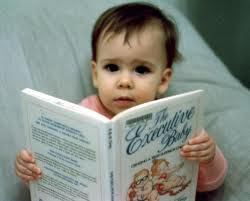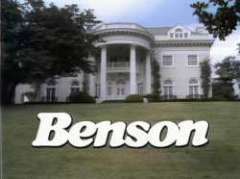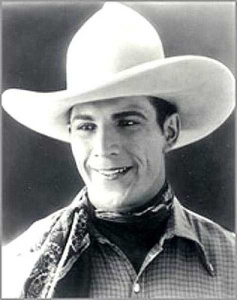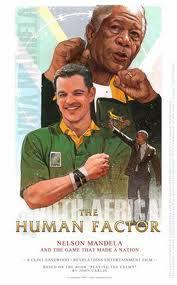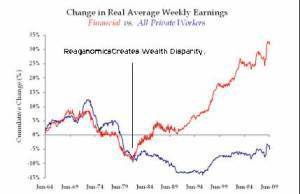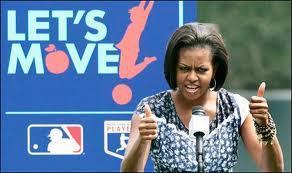Alon Shalev's Blog, page 35
July 24, 2012
The Top Talent???? – Tom Rossi
I’ve heard the same baloney many times: “We need to offer ‘competitive’ salaries to executives in order to attract ‘top talent.’” This reasoning was offered up recently, not by some corporation lining the pockets of executives while workers lose their homes, but by the California State University system, which doled out significant raises to the incoming presidents of three campuses before they even spent one day on the job.
This was simultaneous to raising tuition and cutting class availability for students. The “best talent”. Riiiiiiight. Let’s look at what the “best talent” has done. They’ve driven companies into the ground, killed manufacturing where it might have survived the outsourcing onslaught, lost many billions in investor funds, cheated on taxes (both corporate and personal), lobbied (both legally and illegally) to get their cheating legalized, and when it was finally suggested that it might be best to move on, they took huge “golden parachute” packages with them, even as the corporations they had headed burned to the ground.
University presidents and the organizing bodies above them have raised tuition by stunning amounts while eliminating many basic education options and, in many ways, “dumbing down” the education offered by their schools. Faced with tough realities like budget cuts from the state, they never miss an opportunity to pass the pain straight to the students while protecting their own salaries and benefits.
That’s what the “top talent” has brought. What the hell would “medium talent” bring????
Here’s the problem. The world of executives has jettisoned the world of ordinary people. It’s now its own planet with its own logic, its own motivations, its own criteria for success, and its own, self-determined reward system.
Back here on Earth, I have known SO many people who were SO much better than this in SO many ways. These people are not driven by “success” or money. They are driven by a passion for their work and for accomplishing something real in this world.
These people, almost by definition, aren’t motivated by money. Yes, of course they need and want money in order to survive or maybe even live comfortable lives, but they wouldn’t “sell their souls” for more money. If the salaries the top executive positions were severely cut and limited, what kind of people would be attracted to these positions?
People who CARED ABOUT THEM! I have several educators in my family. They are all highly intelligent. Do you think they took on those careers for the money? Especially decades ago? Not a chance. They did this because they had something to give, and when you have something to give and you can’t give it, it hurts you inside.
We need the promises of marketing departments to actually come true. We need executives who are passionate about doing something good for our world, or even for some product line, but not just for enriching themselves monetarily.
-Tom Rossi
___________________________________________________________________________
Tom Rossi is a commentator on politics and social issues. He is a Ph.D. student in International Sustainable Development, concentrating in natural resource and economic policy. Tom greatly enjoys a hearty debate, especially over a hearty pint of Guinness.
___________________________________________________________________________

July 23, 2012
Agent Orange – Not Going Away?
During the Vietnam War (1961 – 1971) the US military launched a program called Operation Ranch Hand in which chemicals (herbicides and defoliants) which the Vietnamese government estimates killed or maimed 400,000 people. In the ensuing years they claim that half a million children were born with birth defects.[1]
It was later discovered that Agent Orange (a 50:50 mixture of 2,4,5-T and 2,4-D, if that makes any sense to you) contained an extremely toxic compound (2,3,7,8-tetrachlorodibenzodioxin). During Operation Ranch Hand, the US military sprayed nearly 20 million US gallons (80 million liters) mixed with jet fuel over Vietnam, Eastern Laos and parts of Cambodia. The goal of the program was to destroy the dense forests where the guerrillas took cover. In addition, they sought to destroy the resources needed by the indigenous population which would force them to live in the U.S. dominated cities. The idea here was to deprive the guerrillas of their rural support base and food supply.
All this is a history lesson, right? Wrong. History has a habit of not disappearing into books.
http://www.youtube.com/watch?v=qYlzApY5MM0
And a CBS report:
http://www.youtube.com/watch?v=65KFpyxK0Ho&feature=related
——————————————————————————————————
Alon Shalev is the author of The Accidental Activist and A Gardener’s Tale. He is the Executive Director of the San Francisco Hillel Foundation, a non-profit that provides spiritual and social justice opportunities to Jewish students in the Bay Area. More on Alon Shalev at http://www.alonshalev.com/ and on Twitter (@alonshalevsf).

July 20, 2012
Join The Party
Left Coast Voices celebrates its third birthday this month. We are approaching 700 posts, have been viewed nearly 36,000 times, have over a hundred loyal followers, and have generally had a good time, offering our opinions without annoying too many people along the way.
What I enjoy about Left Coast Voices is that we attract people with a variety of views who can articulate their opinions. You can be a liberal but here that doesn’t mean you have to support everything about our president. Just because you are excited by the potential of the Occupy movement, doesn’t mean you agree with every action.
Our readers think. Our writers think.
I want to take the opportunity to thank Roger Ingalls and Tom Rossi, who have become regular partners, tying up the Tuesday and Thursday slots. My only regret is that we have not hung out more often at Jupiters – micro-brewed beer, serious pizza, and great conversation. Norman Weekes has joined us on a less regular basis, but we are grateful for his contributions. You are always welcome, Norm.
I believe the diversity of writers is what makes our little community special. You never quite know what article or topic you are going to get and who is going to agree/disagree with whom.
I feel ready to offer up a slot to a fourth person. The criteria are that you write weekly (each contributor gets a consistent day: Tom – Tuesday, Roger – Thursday) and observe the three NOs – no racism, sexism, or homophobic comments. If you wish to write on a specific theme – gender, local grassroots, food justice, environmental, occupy etc., that would be great. If you prefer to choose a different topic each week, that works too.
I will teach you the mechanical aspect of blogging on WordPress and you will find a supportive team behind you. Along with the collaborative nature, there are other advantages. Left Coast Voices has its platform and following. We feed off each others followers – you are not blogging for your mom and best friend (though they are both very important!). If you have a book or cause to promote in your signature, you are welcome to do so.
If you are interested, let me know in the comments below. If you have something to say, we can help you say it.
Have a great weekend, everyone.
Alon
——————————————————————————————————
Alon Shalev is the author of The Accidental Activist and A Gardener’s Tale. He is the Executive Director of the San Francisco Hillel Foundation, a non-profit that provides spiritual and social justice opportunities to Jewish students in the Bay Area. More on Alon Shalev at http://www.alonshalev.com/ and on Twitter (@alonshalevsf).

July 19, 2012
2012: A Year to Remember – Roger Ingalls
Global warming, who cares. We’re only talking about a few degrees so what’s the big deal? The availability of food is the big deal.
Starch based foods, such as; corn, rice and wheat are members of the grass family and the life blood for most people on Earth. Not only do we eat starch-plants but our livestock is primarily fed corn and similar grassy vegetation. In addition, close to 70% of all items found on grocery stores shelves in developed countries have some type of corn byproduct in them (an unintended consequence of subsidized farming). The world depends on starchy grasses so we must have large land masses in climate zones suitable for growing these plants.
Global warming of a few degrees may not seem like much but when compared to temperature ranges required to grow our food, the small change isn’t so little.
For the purposes of this short article we’ll talk about corn. The ideal temperature range for growing corn is 68F to 73F degrees and having an abundant amount of weather in this range is needed to keep food prices affordable and available. The ideal growing range is only 5F degrees (73 – 68 = 5) so a climate shift of 2 or 3 degrees will consume 50% of corn’s growing range budget and that is significant. The average growing season temperature for America’s bread basket region (Nebraska, Iowa, Illinois…) is about 72F degrees so an upward shift of just a few degrees takes us out of the ideal condition. This is bad news for high yields.
Global warming also has another, more damaging, side effect; prolonged extreme temperature variation. This is what we are now experiencing in the Midwest and it’s having a devastating impact on crops. In past years, it was normal to have a handful of super-hot days but climate change is producing consecutive weeks of scorching heat. More bad news for crop yields. Corn can survive in a range of 50F to 95F degrees for a period of time but will not yield well above 80F or below 60F. Corn can even tolerate extreme temperatures (32F to 110F degrees) but only for a few days. When we have weeks of heat over 100F degrees, as we have seen this year, crops fail.
2012 may become a year to remember. It will be a year of climate records in both high temperatures and protracted heat days. It will be a year of failed crops.
A few degrees does make a difference.

July 18, 2012
Shaft Strikes Again – Norman Weekes
There are things we whisper to each other when white folk are not around.
Yes it’s true. When two or more Black folk stand by the water cooler we talk in-house. Most of it need not be shared. ‘They’ wouldn’t understand. It would take hours, maybe years of context to not be misunderstood. But at the risk of having my “Black Enough” card revoked, I’m going to share one of these secret communiques. For about two years now, ever since Obama started getting his ass kicked on every meaningful issue of concern to the Black community I’ve heard this or something like this:
After checking the room, looking over both shoulders one of my beloved - brothers or sisters will lean in and say “Just wait until the second term. Then we’ll see the real Obama!”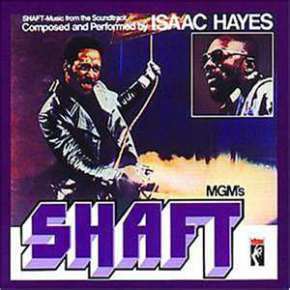
The hope is that unencumbered by re-election politics he’ll transform from Urkel to John Shaft. Maybe even Dolemite. Something other than what he’s already proven to be. The guy we wanted. Not the guy he is – Benson. I can hear the First Lady screaming “Benson! Oh no you didn’t!” Obama’s recent open mic gaff to Russian President Medvedev gave hope to the fantasy. Never mind he was referring to foreign policy and stating the obvious.
I understand the desire to believe that the conformity, reserve and caution is just an act until he’s free to be the real Obama. After all, we’ve done this everyday for hundreds of years. It’s a coping mechanism that has served us well in a persevering kind of way. At the same time we desperately want to believe Obama’s just waiting for the opportunity to “stick it to The Man” even if he is “The Man”.
This theory ignores a cardinal rule of being Black in America. If you get in don’t f-it up for the next brother. The next Black president is alive today. Obama knows this. He may hope the next Black president is living in the White House today. If he is a Super Negro waiting to emerge, checks and balances will temper Obama’s second term. The Republican House and/or Senate along with conservative Supreme court justices who obviously sold their souls for eternal life will keep him in “check”. Wonder if Satan tried to return those souls after a quality check. Caveat emptor Beelzebub.
Second term Presidents rarely get wild and crazy in their second term. Nixon and Clinton were impeached and I’ve had the entire Bush 43 presidency erased from my memory. I don’t think his second term was very memorable but you can look it up.
In the final analysis the Obama we have is way better than any alternative. You know it, I know it, and the American people know it. As William DeVaughn reminds us: Be Thankful for What You Got.
——————————————————————————————————
Norman Weekes is a volunteer in social justice non profits and occasional political activist.

July 17, 2012
The Good Guys and the Bad Guys – Tom Rossi
As I’ve listened to the debates about many issues in our country, most especially the “stand your ground” laws that have proliferated like mad and become so controversial after George Zimmerman chased down and shot Trayvon Martin, one thing has become increasingly clear: in the conservative mind (as in old westerns and their modern counterparts) there are good guys, and there are bad guys.
This appears to be the idea behind many Republican “principles,” the idea that people are either good or bad with little in between. And along with that comes the equally ridiculous idea that other “good” people will instantly be able to tell who is who in a conflict.
Let’s paint a scenario: You’re in a bar in Repubofantasyville, minding our own business (as “good” people always do), drinking American beer, and packing heat. All of a sudden, there is some shouting in the next room. You walk in with gun drawn, like any responsible person would do, and you find two guys in the process of drawing their own guns. It’s clear that each intends to shoot the other. So who do you shoot?
In Repubofantasyville, the good guy will, of course, be wearing a white hat, while the bad guy wears a black hat. Shoot the black hat, justice has been served, end of story. But what if it isn’t so obvious? The idea behind “stand your ground” is that, with everybody armed to the teeth, no one will try to commit a crime because of the fear of being shot.
But this particular sub-fantasy ignores passion. Sometimes, cooler heads don’t prevail and a fight breaks out. It two guys get into an argument and each knows the other has a gun, won’t each be more likely to pull their gun? It would be illogical to wait for a clearly wrong, hot-headed and mentally deficient opponent to draw his gun first. So each knows he has to be first. And if one sees the other going for his gun, the logical thing to do is to pull the trigger – first.

And there you are, having walked in on this situation and intending to prevent the bad guy from shooting the good guy. So who do you shoot?
It’s all too easy to construct scenarios where “stand your ground” laws would be (and are now) misused, abused, and just difficult to interpret – as in the Trayvon Martin shooting. But this entire idea that people are either good or bad is without merit.
If there ever have been purely good people on this planet, they have been few and far between. Almost everybody has acted (or at least thought) selfishly at some point, putting his or her own needs or wants ahead of someone else’s. Speeding in a car, jaywalking, cheating just a little bit on taxes, telling little white lies… these are all imperfections. And the same goes for the other side of this fantasy. There have been very few, percentage-wise people who could be called purely bad.
Most people are somewhere in between. Most people live decent lives but not perfect. And there is no line to cross over from good to bad, there’s only a gradient. This is human nature. We are complex beings and our social interactions are complex, as well. Policies based on simplistic interpretations of reality are doomed to fail.
-Tom Rossi
___________________________________________________________________________
Tom Rossi is a commentator on politics and social issues. He is a Ph.D. student in International Sustainable Development, concentrating in natural resource and economic policy. Tom greatly enjoys a hearty debate, especially over a hearty pint of Guinness.
___________________________________________________________________________


July 16, 2012
Life After West Wing? Post July 4th Blues
My wife has been an integral part of everything wonderful in my life. But what has she done now? Knowing I am a recovering addict of West Wing, she had no right to send me the following clip. Is anyone watching Jeff Daniels and Aaron Sorkin new series, The Newsroom? How is it? Please share in the comments below for those of us who live without HBO.
Warning: There is explicit language in the clip.
Is this a good time to mention that I think we watch way too much TV?
——————————————————————————————————
Alon Shalev is the author of The Accidental Activist and A Gardener’s Tale. He is the Executive Director of the San Francisco Hillel Foundation, a non-profit that provides spiritual and social justice opportunities to Jewish students in the Bay Area. More on Alon Shalev at http://www.alonshalev.com/ and on Twitter (@alonshalevsf).


July 13, 2012
Why It Has To Be Fiction
Last month, I was invited to address a very politically aware audience about my novel, The Accidental Activist. I spent considerable time describing the McDonalds’ libel trial that transpired in London throughout the 1990’s This is the the court case upon which The Accidental Activist is based.
I was deeply inspired by the trial at the time and meticulously researched ‘McLibel’ as it became known. My fictional timeline corresponds exactly with the real trial and many of the events in The Accidental Activist parallel what transpired in the real court case. In fact, many of the more infamous quotes from real-life witnesses just happened to find their way into the mouths of my characters.
I allocated a fair part of my talk to the idea of writing for social justice, to help empower people to create a better world. This is a consistent theme throughout my books, and here on Left Coast Voices - so it begged someone to ask the question: Why fiction?
My answer was not very impressive. I mumbled that John Vidal, a journalist for The Guardian in the UK, had done a great job of writing the definitive book on the case and even had a copy on hand to show them.
But there is more. I believe fiction allows the writer to reach more people and on a deeper level than non-fiction. We open ourselves to the emotions of the characters, the smell of the place, the textures of color, food, or wine. We become invested in their challenges.
But most significantly, we read fiction to identify with the characters, particularly the protagonists. Often we align through gender, life experience, fears, or loves. I have heard from women who were deeply affected by my character Suzie’s ideological drive for a better world. Men can understand how Matt felt driven to step outside his comfort zone and find a way to defend his woman.
If we can create a bond between character and reader, we open the opportunity for the reader to create an environment in which to undergo a similar transformation in their own life.
I believe relationships are what drive people to step outside their safe space. I believe people were able to relate to then-Senator Obama’s (and/or Michelle’s) drive for a better America, for change we can believe in. This was what motivated so many to get involved and head to the polls four years ago and, I hope, what ultimately will bring them out to vote again in November.
When we relate to a person we admire, whether in fact or fiction, we consider on a conscious or subconscious level whether we can emulate that person and make a similar, courageous decision. Perhaps this will empower us to believe that our actions can create a better world.
Have you ever been inspired by a book to take action? Has a fictional character ever helped you change your life? If so, please share in the comments below.
Good Writing,
Alon
——————————————————————————————————
Alon Shalev is the author of The Accidental Activist and A Gardener’s Tale. He is the Executive Director of the San Francisco Hillel Foundation, a non-profit that provides spiritual and social justice opportunities to Jewish students in the Bay Area. More on Alon Shalev at http://www.alonshalev.com/ and on Twitter (@alonshalevsf).








July 12, 2012
Genocide of the Middleclass – Roger Ingalls
James Carville has just released a new book (It’s the Middle Class, Stupid) and the President is now shaping his re-election rhetoric around helping the middleclass so I feel it is prudent to repost (with edits) one of my earlier articles about the subject.
It is mind-boggling that so many Americans have a god-like fascination with Ronald Reagan. This is the man who set in motion the financial destruction of the middleclass. Unbelievably, a significant portion of Middle America still loves the man. Why? Is it some sort of Battered Wife Syndrome or is the conservative middleclass too embarrassed to admit that they were duped by the Republican Party?
But, here we are, repeating stupidity. Instead of trying to reverse Reaganomics, conservatives are still trying to enhance it; more tax cuts for the rich and for corporations, more union busting, deregulation and privatization of government programs.
To increase our understanding, let’s review history: today, many Americans believe that middleclass society magically appeared with the birth of our nation and grew over time. This is not true. With the market crash of 1929 and the subsequent Great Depression, the country fell into economic chaos and floundered under Republican President Herbert Hoover. Prior to that, there were a few rich people, a lot of poor folk and a handful of in-betweeners. Franklin D. Roosevelt became president in March of 1933, quickly launched new legislation and executive orders that would become known as the New Deal.
The New Deal increased taxes on the wealthiest Americans, increased corporate taxes, regulated banks and Wall Street, created government programs (social security, unemployment insurance and minimum wage), and created pro-union alliances. FDR’s policies pulled our Nation out of the depression and gave rise to Middle America. In less than a decade, the middleclass would grow to become the largest demographic in the country and the envy of the world—The Great American Middleclass.
From the late 30s through the late 70s America prospered, the Middleclass would live comfortably and we became the undisputed world power. In steps the B-movie cowboy with his traveling show of Reaganomites and the genocide begins. Middle America was forced to save less just to maintain living standards, eventually leading to the necessity of financing their way of life. Wealth transferred from the Middleclass to banks, corporations, the rich got richer and this trend continues today. Wealth disparity now sits at the largest level since the robber-baron days of the late 1800s through the 1920s.
Americans need to act by educating ourselves on what policies actually work based on historic proof. We must not listen to money-influenced mainstream media. We must not let ourselves get polarized (against each other) through agenda promoted by today’s corporate-financed politicians—it’s their tactic to divide and conquer.
Genocide of the Middleclass, begun by Ronald Reagan, must stop. Hopefully the influential power of James Carville will help bring attention to proper change. And maybe, just maybe, the President’s renewed commitment to the middleclass is more than the normal lip-service.








July 11, 2012
Robbing the Next Generation – Childhood Obesity
There is a certain sense of irony writing a blog post about obesity on this day – seven-eleven – but here we go. My previous post on this topic ruffled some feathers, not least among those who are struggling with overweight and its repercussions. I know it is a sensitive topic and I have no intention of belittling anyone or their health challenges. I applaud anyone who has the strength to take steps to turn things around and am full of admiration for those I see turning up at my gym and pushing themselves daily on the cardio and other machines.
But obesity is a growing issue in this country and we must address it. Nothing is as difficult as seeing children already walking such a path at a young age. Parents have so much to struggle with today: the intense demands of homework, the lure of screens, the danger of letting their children out in the streets. All this in addition to the strains of a full time job and often only one parent in the picture. It is hard to find the strength to say no too often, hard to find the energy to cook a healthy meal that doesn’t resemble what children are bombarded with on TV and elsewhere by clowns.
First Lady, Michelle Obama’s campaign against childhood obesity turned 18 months earlier this week. Not quite the terrible twos yet, but the First Lady seems to know what she is up against. The skeptics have made sure she knows, claiming that the money poured into advertising and promotion by the huge multinationals that run the food and agriculture industry might make promises but won’t risk their profit margins.
But Nancy Brown, chief executive of the American Heart Association, is one of many who disagrees and claims that Mrs. Obama “has been a spark plug, raising awareness about the potential future of the U.S. as a nation of fat, unhealthy people unless the trend is reversed.” She acknowledges that Mrs. Obama has been doing it in ways that health food advocates can’t.
She has addressed law makers at every level, school groups, food producer and other constituencies, urging more bike paths and playgrounds, to serve healthier school lunches, and to produce and sell healthier food. Mrs. Obama has visited schools across the country to encourage initiatives such as fruit and vegetable gardens, healthy options for school lunches, and participating in exercise clinics with children.
Most impressive in my opinion (and it is all impressive), is her work advocating at food manufacturers, beverage makers and stores. A little corner store you might have heard of, Walmart, pledged to reformulate thousands of its store-brand products to reduce sodium, sugar and fat, and provide incentives to its suppliers to do the same. Walmart has also pledged to cut its prices for fresh fruit and vegetables, and develop a platform that clearly identifies healthier choices. This is a big player move. Walmart’s grocery business accounts for about 15% of the U.S. grocery industry.
 “We are seeing a fundamental shift in our national conversation about how we make and sell food,” Mrs. Obama said when she addressed Walmart executives at the beginning of the year. “That’s something that wasn’t happening just a year ago.”
“We are seeing a fundamental shift in our national conversation about how we make and sell food,” Mrs. Obama said when she addressed Walmart executives at the beginning of the year. “That’s something that wasn’t happening just a year ago.”
People get worked up about children, whether they are their own or not. We have saddled the next generation with an enormous debt and a crashing environment. Sometimes these topics seem to massive for us to do anything about it and we feel disempowered.
 But to create a healthy diet and lifestyle for our children is something we can grasp. We can run around with them at the park instead of reaching for Netflix. We can volunteer at our local school vegetable garden, and we can think about what we serve at the dinner table. There is an advert on the radio at the moment urging us to give our children water or fruit juice rather than a can of sugar. We don’t, perhaps shouldn’t, make radical changes all at once, but the next generation’s journey begins with small first steps.
But to create a healthy diet and lifestyle for our children is something we can grasp. We can run around with them at the park instead of reaching for Netflix. We can volunteer at our local school vegetable garden, and we can think about what we serve at the dinner table. There is an advert on the radio at the moment urging us to give our children water or fruit juice rather than a can of sugar. We don’t, perhaps shouldn’t, make radical changes all at once, but the next generation’s journey begins with small first steps.
Thank you, Mrs. Obama. Now excuse me if I go and play soccer with my sons.
——————————————————————————————————
Alon Shalev is the author of The Accidental Activist and A Gardener’s Tale. He is the Executive Director of the San Francisco Hillel Foundation, a non-profit that provides spiritual and social justice opportunities to Jewish students in the Bay Area. More on Alon Shalev at http://www.alonshalev.com/ and on Twitter (@alonshalevsf).



